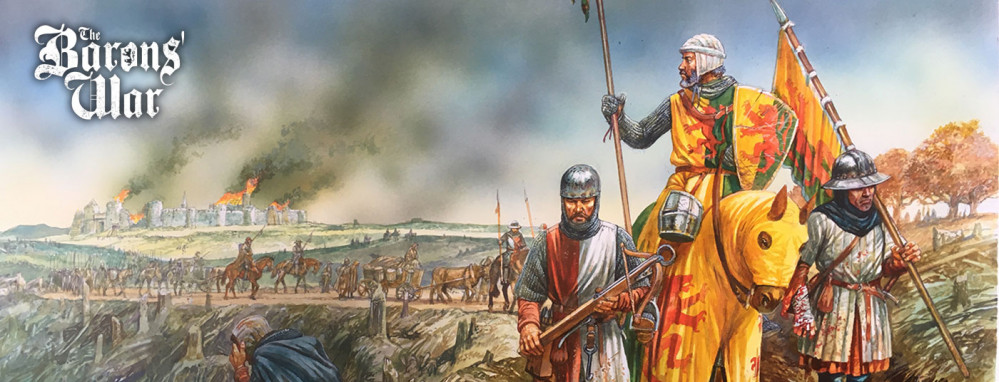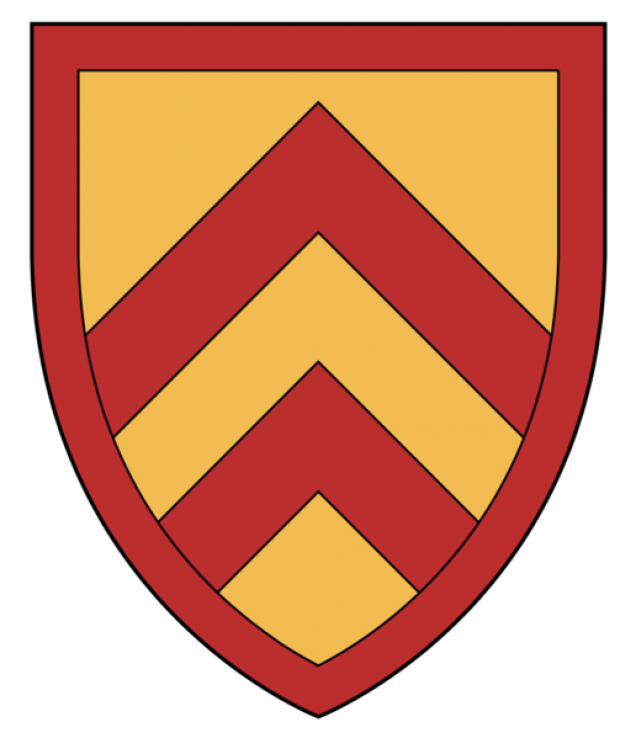
PanzerKaput Goes To Barons' War
William d’Albini, Baron of Belvoir
William d’Albini (d’Aubigny) was a relative latecomer to the baronial opposition cause, but one of the movement’s ablest military commanders and the leader of the defence of Rochester against King John in 1215. After John’s son, Henry III, succeeded to the throne in 1216, he showed himself a loyal supporter of the new regime.
William (after 1146–1236) was the son of William d’Albini II by his wife Maud FitzRobert, the grandson of another William, known as ‘Brito’, and the eventual heir of the first post-Conquest lord of Belvoir, Robert de Todeni. William’s lordship was an extensive one stretching across the east and north Midlands, comprising some 33 knights’ fees, in part overlooked from Belvoir (Leics.) itself, dramatically sited on a high ridge west of Grantham.
William, like a number of the Twenty Five, embarked on the path to rebellion with reluctance being by both upbringing and instinct a natural royalist. He had had long experience of serving in royal administration. In 1195 and 1197, under Richard, he had held office as sheriff of Warwickshire and Leicestershire and in John’s first year he was appointed to the same office in Bedfordshire and Buckinghamshire. In 1200 he had served as a custodian or justice exercising supervision of the Jews, and in 1210 he was appointed with other lords to supervise collection of tolls in the ports. In February 1213, as John’s suspicions of the northern lords were deepening, he served as a commissioner to look into money allegedly collected by sheriffs and other officials that never found its way into the royal coffers.
William eventually joined the opposition shortly after the fall of London in May 1215, doing so probably for a number of reasons. Almost certainly he was growing disenchanted with the oppressive nature of John’s kingship. Five years before, he had been a witness to John’s official account of the reasons for his destruction of the Braose family, thereby associating himself with the king’s actions, while yet becoming aware of their arbitrariness. At the same time, like other lords, he was feeling the acute financial burden of John’s misrule. As late as 1230, more than a decade into Henry III’s reign, he still owed no less than £3,308 to the Crown of old debts dating from John’s reign. In company with others of the Twenty Five, he could be counted among the debtors of 1215. Finally, he is almost certain to have been influenced by the ties of kinship. He was the first cousin of Robert FitzWalter, lord of Dunmow, to all intents and purposes the leader of the revolt, and was the uncle of another rebel, Robert de Ros, the lord of Helmsley. It may also be significant that among his knightly tenants was Nicholas de Stuteville of Knaresborough, the greatest baronial debtor of all.
In June 1215 his experience and social standing ensured his appointment to the Twenty Five and from the autumn, after the renewal of war, he fought actively on the baronial side. In July, after the barons had gone their separate ways, Robert FitzWalter was writing to him to advise of a change of meeting-place for a tournament from Stamford to Hounslow Heath. John’s strategy in the civil war was to counter the baronial challenge by bringing in a force of mainly Flemish mercenaries to help re-take London. The barons, to prevent these men’s passage inland from Dover, made for Rochester, at the bridging point over the Medway, and quickly took the castle, installing William as constable. John retaliated by immediately embarking on siege operations. The castle, though ill-provisioned, was well manned, with some 95 knights and 45 men-at-arms under William’s command, and strong resistance was offered. Both sides fought fiercely. ‘Living memory does not recall a siege so closely pressed or so bravely resisted’, wrote the Barnwell chronicler. To eke out the meagre food rations in the castle, d’Albini ordered the sick and the wounded to be ejected, a common tactic in sieges at the time; according to the Barnwell writer, the king had their hands and feet cut off. The turning-point in the siege came in November, when the king’s men successfully undermined one of the keep’s corner towers, bringing it down, and opening a way in. William had no alternative but to surrender, and he and his garrison were sent off to captivity at Corfe.
Following this success, the king made his way to the Midlands, where he directed the siege of William’s castle at Belvoir. After he had issued a threat to starve William himself if the garrison held out, the latter’s son Nicholas, who was heading the defence, hastily offered his surrender. William regained his freedom in November 1217, when he agreed to a fine of 6,000 marks and to the surrender of his wife as a hostage for his good behaviour. His career from now on was that of a committed supporter of the new Minority regime. He fought on the Regent’s side at Lincoln, and his loyalty earned its reward in his appointment as constable of Sleaford Castle. In 1223 he joined the young Henry III on his campaign against Prince Llewellyn and the Welsh at Builth Wells and Montgomery. Two years after that, he was one of the group of counsellors who witnessed the final and definitive reissue of Magna Carta and the Charter of the Forest.
William died on 1 May 1236 at his manor of Uffington, near Stamford (Lincs.). His remains were interred in the priory which he had founded at Newstead, just outside the village; his heart, however, was removed for separate burial at Belvoir Priory. Between 1221 and the early 1230s the future chronicler, Roger Wendover, was prior of Belvoir, a dependent house of St Albans. It seems very likely that he was indebted to d’Albini for his account of the siege of Rochester, which is full of circumstantial detail.
William was twice married. His first wife was Margery, daughter of Odinel de Umfreville of Prudhoe (Northumberland), whose date of death is unknown, and his second, Agatha, sister and coheir of Robert Trussebut of Hunsingore (Yorks.). William’s heir was yet another William, who died in 1247 leaving only daughters, one of whom, Isabel, married Robert de Ros (d. 1285) of Helmsley, descendant of the lord of that name who was of the Twenty Five, so carrying the d’Albini inheritance to the Ros family.
The family of d’Albini of Belvoir is not to be confused with that of the same name based at Old Buckenham (Norfolk) and Arundel (Sussex), which held the title of earl of Arundel.











































































Leave a Reply